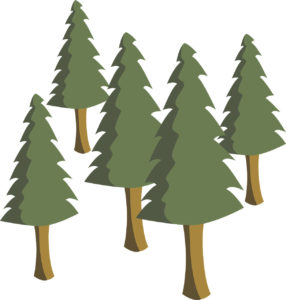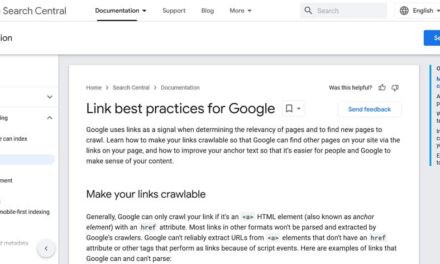Evergreen content is a powerful tool for building traffic, earning links, and improving rankings. If you want to create a successful blog, it should be part of your content strategy.
In case you don’t yet know what evergreen content is, how it can help your marketing, and – most importantly – how to create it, that’s exactly what we will cover in this post.
Stay tuned!
What Is Evergreen Content?
The term “evergreen” comes from the world of plants. It describes those plants that don’t lose their leaves with the seasons and instead stay green all year round.
That is also what evergreen content is: blog posts and content pieces that continue to be relevant long past their publication date, regardless of what’s happening in the world. While all content stays around, the evergreen variety stays on top of search results for months, years, even decades.
How do they do that? By revolving around topics that people are always interested in, such as:
- How to train your dog
- Recipes
- Dating advice
- Weightlifting tips
Mostly, the revolve around the basic needs and desires of humanity, like love and romance, money, careers, children, food, etc.
On the other hand, non-evergreen topics are:
- Celebrity news
- Seasonal content, e.g. that revolve around certain holidays
- The latest iPhone release
- “Is that dress blue and black or gold and white?”
Basically, evergreen topics are perpetually important while non-evergreen topics only have temporary significance and will go away with the next news cycle or so.
The Benefits of Evergreen Content
That’s also the main advantage of evergreen content: it continues to stay relevant. With other content, the attention wanes over time.
If you run a news site, you always have to publish the latest developments to keep bringing in visitors. An article that gets lots of attention one day can be completely out of date a week later. This makes it much harder to build sustainable traffic – if you don’t publish new stuff, your stream of visitors tapers off.

On the other hand, an evergreen piece of content you write once and it continues to bring in traffic without you having to do anything. Sure, you might have to update it here and there if new information comes out, but the bulk of the article will always be relevant and helpful to readers – who continue to look for, share, and link to it.

So, do less work and also potentially get more traffic? What’s not to love?
In addition, Google loves evergreen content. They have confirmed that content is one of their three top ranking factors (together with links and RankBrain). So, if you can create something that their algorithm sees as a valuable resource, they are happy to give you the top spots in their search results.
How to Create Evergreen Content
Alright, now that you are convinced and ready to drink the evergreen kool-aid, where do you start and how do you pull it off?
1. Find the Right Keywords
The first step is to do keyword research. We have an entire article on that topic that you can refer to.
Basically, brainstorm topics and enter them into keyword research tools to get variations and long-tail phrases. From here, you can see if any evergreen topics pop up.

Try to find topics that are narrow enough. These days, it’s harder to rank for broader topics as a lot of content already exists and with a narrower approach, you can better concentrate on the reader. Think “the right fishing rod for fly fishing” rather than “fly fishing” .
Once you have found a few, you want to vet them. The first thing is if they are indeed evergreen. Is there steady interest over time that would warrant investing in content on this topic?
A simple tool to check this is Google Trends. Here, you can simply input any keyword and see its search interest over time. In the case of “blogging for business“, it seems relatively stable.

In addition to seasonality, also look at if the interest is increasing or decreasing. For example, the general interest in “veggie burger recipe” seems to be on the decline.

Secondly, you want to look at search volume. A topic can be evergreen but if only a small number of people really care looking for it, it will not benefit your site.
You can use Google Keyword Planner for that. It’s free to use though you need a Google Adwords account.

2. Create the Right Content
Once you have topics worth exploring, it’s time to create the actual evergreen content. There are certain content formats that are specifically suitable for this purpose. Backlinko recently did a study on this topic and found the following types most likely to become evergreen:
Besides picking the right type of content, it’s also about investing in the correct level of quality.
On paper, it’s pretty simple: create a resource for readers that will be as useful in a few years as it is today. Yet, just because it is simple, that doesn’t mean it’s necessarily easy.
To create a content piece that will rank well, attract links, and bring in traffic for a long time, you need to aim to be the best resource for this particular topic, much better than what else is out there. If you can do that, you will also create a valuable asset for yourself that can continue serving your site for years to come.
In the marketing world, we have a few concepts to achieve this, among them the skyscraper technique or 10X content. I recommend you read up on these because there is not enough space here to talk about them in detail.
In the end, it’s all about making sure you differentiate yourself from what’s already out there. That can be through better content quality, better design, a unique perspective, or a mix of different factors. For example, you can include lots of statistics, maybe even original research, especially in visual form. Also, when creating your content, be sure to nail on-page SEO.
3. Avoid Non-Evergreen Angles
Just because a topic is evergreen, that doesn’t mean your content necessarily will be. One of the trappings that people fall into is that they write evergreen content in a way that is not perpetually relevant.
(Be aware that there are also evergreen topics that don’t yield evergreen content. For example, people are always interested in stock prices, sports scores, and weather updates. However, these are always changing, so any content you write about them will be out of date quickly.)
A common example here is newsjacking. That means setting up your content and headline in a way that references current news items or popular culture. Think along the lines of “The Tiger King Style Guide: Fashion Blunders Men Should Avoid” or “Bored During Lockdown? 12 Pandemic Activity Ideas to Stay Upbeat“.
True, this kind of approach and headline can bring you lots of short-term attention. However, at some point Netflix’s documentary loses its pop appeal and the pandemic will (hopefully) end and with them, the appeal of your content. In short, avoid that.
That is not to say that you should never reference popular culture in your content. For example, some personalities are such icons in their respective fields that their name continues to carry weight. Examples are “The Arnold Schwarzenegger Guide to Building Muscle” or “How to Write Like Ernest Hemingway“.
Both Arnold and Hemingway continue to be relevant even though one of them is now in his 70s and the other one is, well, dead. Yet, they are so iconic that being like them is still desirable. So, you can use this for evergreen content but it’s a fine line to walk.
4. Avoid Dating Your Content in Other Ways
Similar to staying away from references that would quickly deteriorate the relevance of your content, so should you avoid words and phrases that date it. Think things like “this year“, “last year“, or “As the Obama administration announced last week…“, etc. Such phrases will only serve to date your content, reducing its perceived relevance.
A common practice in this regard is to include year in the title. We actually have a negative example of this in a post I wrote for Torque called “44 of the Best SEO Tools and SEO WordPress Plugins of 2016“.

In hindsight, I really painted myself into a corner with this one. As you can see, 2016 is even in the permalink, making it very hard to update this post without redirecting it.
Today, likely nobody will be looking for this. While “best seo tools” is an evergreen topic, this particular way of approaching it is not (though it seemed like a good idea at the time).
That’s not to say that including the year in the title doesn’t have its place. It’s a very common practice even for evergreen content. Only, when you use it, you have to make sure to update your content. More on that soon.
More Importantly, Keep It Evergreen
Few topics are so evergreen that the content never needs an update. For most, you will need to make sure it stays fresh and relevant every now and then. Here’s how to do that.
1. Keep an Eye on Your Rankings
When rankings start to falter, it’s a sign that a post is starting to become less relevant. Keeping track of where your content ranks for its main keyword will alert you to when it’s time to take action.
You can see this pretty easily with a tool like Google Search Console. Under Performance, input the link as Page and main keyword as Query at the top. Then filter for average position.

When it’s starting to go down, it’s probably time for an update. There are also a number of popular SEO suites that include rank trackers.
2. Give Your Content New Life
When you have identified problematic content, the question is how to make it better so that you can reclaim or improve its rankings.
If you have done your job right earlier, you should have a solid foundation to work with. In that case, it most likely just needs smaller updates like:
- Newer stats
- Updated screenshots and up-to-date steps in a tutorial
- Removal/update of broken or irrelevant links
In addition, you should have a look at the SERPs and your direct competition, especially those that have passed you by in the rankings. See what their content is doing better and how they are outperforming you. Then, make sure to improve those parts where your content now falls short (also, be sure to update the year in the title). We actually have an entire article on updating content for SEO.
Once you are done with all of that, it’s time to re-publish and re-promote your content so that it can continue bringing traffic to your site.
Last Thoughts: Evergreen Content
Evergreen content has the ability to form a cornerstone of your content strategy and consistently bring in traffic over long periods of time. It takes some more thinking and preparation to figure out, however, in the long run, the upfront work that you need to put in results in better performance and less maintenance over time. It’s definitely better than trying to keep up with the rat race of continuously churning out content that loses its appeal quickly and needs to be replaced by the next best thing.
At this point, you know what goes into creating evergreen content. Now it’s just a matter of putting it into practice.
How do you identify evergreen content opportunities in your industry? Any additional tips? Let’s exchange ideas in the comment section!













